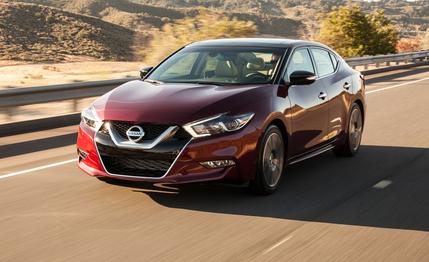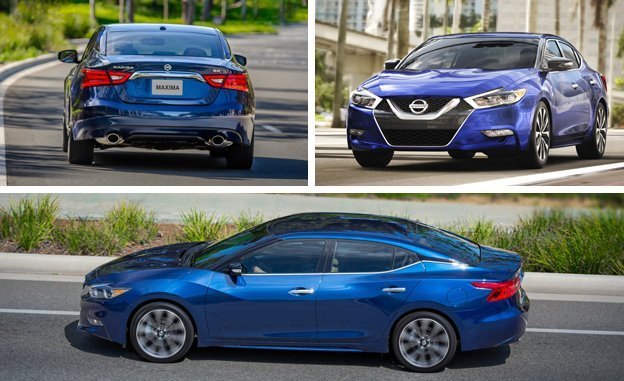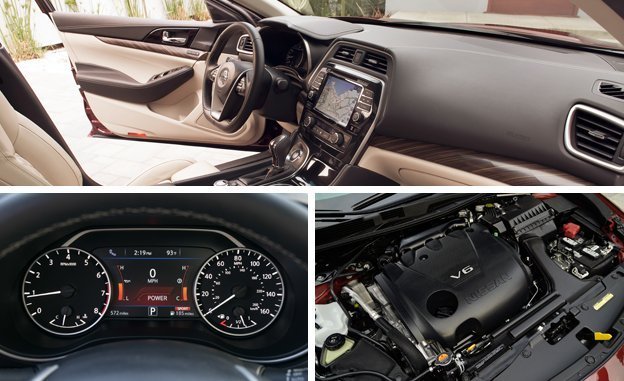
 First Drive Review
First Drive Review
What’s an automaker to do when customers abandon their mid-size sedans in hot pursuit of crossovers and pickups? The smart ones respond with irresistible crossovers and pickup trucks. The brilliant ones do the same without turning a cold shoulder to products they’ve nurtured for decades.
Case in point: Nissan’s new Maxima. With a nameplate that dates back to 1981 and 2.9 million U.S. sales thus far, the eighth-generation Maxima is a sports sedan with rousing performance, in-your-face design, and an interior capable of curing the most festering crossover urge. While other makers dump V-6s to add a hybrid powertrain or an all-wheel-drive option in their family sedans, Nissan is sticking to its Maxima guns with what it once again is touting as “the four-door sports car.”


That’s a stretch given the CVT living between the 300-hp 3.5-liter V-6 and the front wheels, but after a day’s drive near Nissan’s Nashville headquarters, we came away impressed by the effort bestowed upon the brand’s flagship. In spite of the gearless transmission, there’s plenty of fun and four-door utility available here for between $30,000 and $40,000.
The basic package is a touch longer (by 2.2 inches) and lower (by 1.3) but no wider. The 109.3-inch wheelbase and most of the unibody inevitably will be shared with the new Altima due soon. Thanks to more aluminum and high-strength steel, curb weight is a claimed 82 pounds leaner and torsional rigidity is 25 percent greater. Nissan builds the Maxima in Smyrna, Tennessee, in what it says is the highest-volume plant in North America. (Some 650,000 Altimas, Maximas, Pathfinders, Leafs, Rogues, and Infiniti QX60s are scheduled for this year, plus lithium-ion batteries for the Leaf.)
Most of the parts comprising Nissan’s venerable VQ35 3.5-liter V-6 are new, upping power a touch (to 300 horsepower at 6400 rpm, a 10-hp gain), without changing the torque peak of 261 lb-ft at 4400 rpm. Revisions include sodium-filled exhaust valves, reshaped intake valves, a more efficient intake manifold, and a stiffer oil pan. One notable omission is a move to direct fuel injection; Nissan is saving that worthwhile technology for its presumably more needy turbocharged engines. Engineers hoped EPA highway mileage would climb by 4 mpg to the enviable 30-mpg level, and the EPA has indeed certified the Maxima for 22 mpg city and 30 highway.


Thankfully, there has also been a full frontal attack to reduce the negative characteristics of the Maxima’s Xtronic CVT automatic supplied by Jatco. (Originally Japanese Automatic Transmission Company, it is three-quarters owned by Nissan, with Mitsubishi and Suzuki each having minor stakes.)
A 17-percent increase in the spread between the lowest and highest ratios is the main driver underlying the gain in highway fuel mileage. In addition, the CVT’s lubricating fluid is a thinner viscosity, there’s a smaller hydraulic pump, and the drive belt is a new higher-efficiency design.